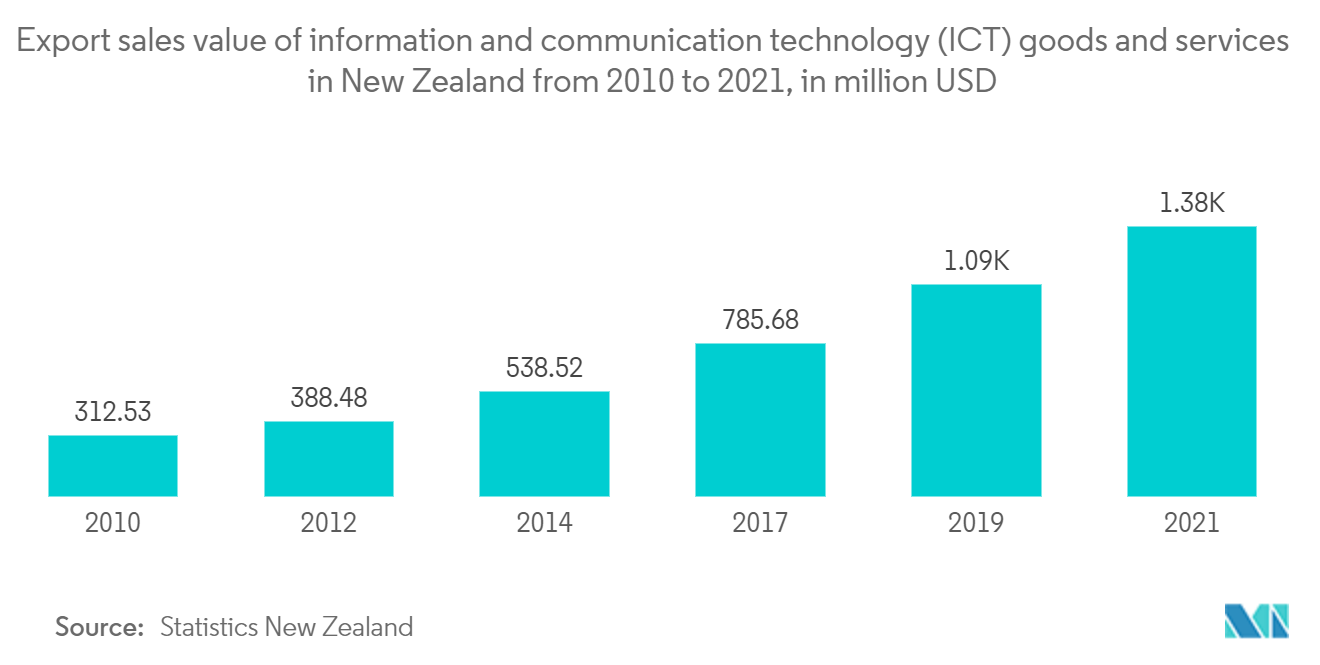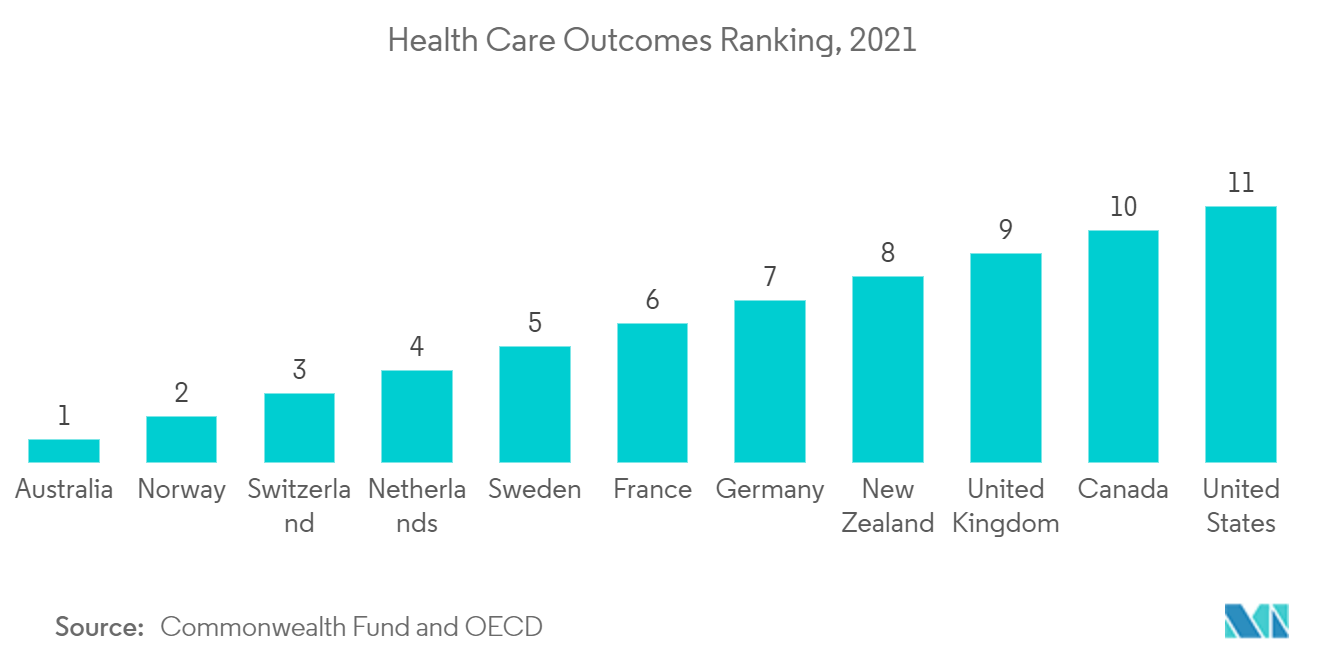Market Trends of New Zealand ICT Industry
This section covers the major market trends shaping the New Zealand ICT Market according to our research experts:
Robust Growth of Technology Export
- Exports of ICT services are associated with computer and communications services (including telecommunications, postal, and courier services), information services (computer data and news-related service transactions), and others. According to the annual Technology Investment Network (TIN) report, the growth of technology businesses in New Zealand grew nine times that of the country's overall economy. By the facts, IT businesses are helping New Zealand create a path for recovery by promoting productivity, variety in exports, and income security.
- A significant strength in this respect is the sector's diversity of export markets, resilience to shocks, and capacity to avoid conflict with climate goals. If things continue as they are, technology exports of the country are expected to reach NZD 20.5 billion (USD 12.8 billion) by 2027. With 14% of all export income in New Zealand coming from technology, it is currently the second highest-earning sector behind dairy. Despite pandemic lockdowns, the sector's growth remained strong, with 31 firms reporting revenue of NZD 100 million (USD 62.6 million) or more, including four firms that exceeded NZD 1 billion (USD 630 million).
- A recent economic analysis highlights that the United States plays a crucial role as an export market, which may be an indication of New Zealand's powerful digital economy. This export includes both software licenses and computer services. As per the country's Trade and Export Growth Minister, the United States is New Zealand's third-largest trade partner overall and is currently the nation's top destination for services, taking in more than 22% of all service exports.
- The New Zealand technology industry significantly contributes to the country's GDP, exports, and employment. Despite the labor scarcity and lack of onshore knowledge, job growth in New Zealand's digital sector is accelerating. Global total employment increased by 10.9% to 62,718 employees, mostly due to job growth in the ICT industry. The upsurge in high-paying IT employment at home is having a significant impact on the national economy.
- As per the Statistics New Zealand report, over USD 1 billion worth of ICT products and services were exported from New Zealand last year.

Digital Healthcare Supported by the Government
- The world was turned upside down by COVID-19. However, it also accelerated the health-tech revolution and drew significant investment across nations. It is no surprise that New Zealand's healthcare sector has grown to be one of the biggest and fastest-growing sectors in the global economy. Owing to the factors such as an aging population, the demand for individualized treatment, privacy, digitalization, and value-based care, New Zealand's health technology expanded steadily during the last five years.
- New Zealand's interim national health plan highlights digital platforms' role in enabling the health system to deliver greater care in homes and communities. The government of New Zealand is dedicated to "growing the options" for individuals to utilize digital technologies to access and use their health information, schedule appointments, get phone and video consultations, and use devices to monitor their health at home. Computers, cell phones, patient portals, and clinical equipment with digital capabilities are some of these options for remote health monitoring.
- New Zealand plans to increase transparency and digital access to primary care in the digital health domain. An interim national health strategy was introduced after the New Zealand government combined 20 previous District Health Boards into two public health agencies, Te Whatu Ora and Te Aka Whai Ora. The government made its most significant health investment to date in the Budget of this year, totaling NZD 11.1 billion (USD 6.5 billion). This includes NZD 600 million (USD 400 million) for the health system's data, digital infrastructure, and competence.
- Digital health has an important role to play and was crucial to the COVID-19 response, with the introduction of the NZ COVID Tracer app, My Vaccine Pass, automated access to COVID test data, and the rapid use of telehealth or virtual care in the country. Digital is a fundamental tool for creating an omnichannel healthcare delivery system that integrates online and in-person treatment and gives people the power to manage their own health.
- According to the Commonwealth Fund and OECD research, New Zealand was placed in the 8th position in the overall ranking of its healthcare system performance in a last year's study of selected high-income nations. Five performance metrics were used to determine the overall rating, including administrative effectiveness, equity, access to care, and care process and results.


